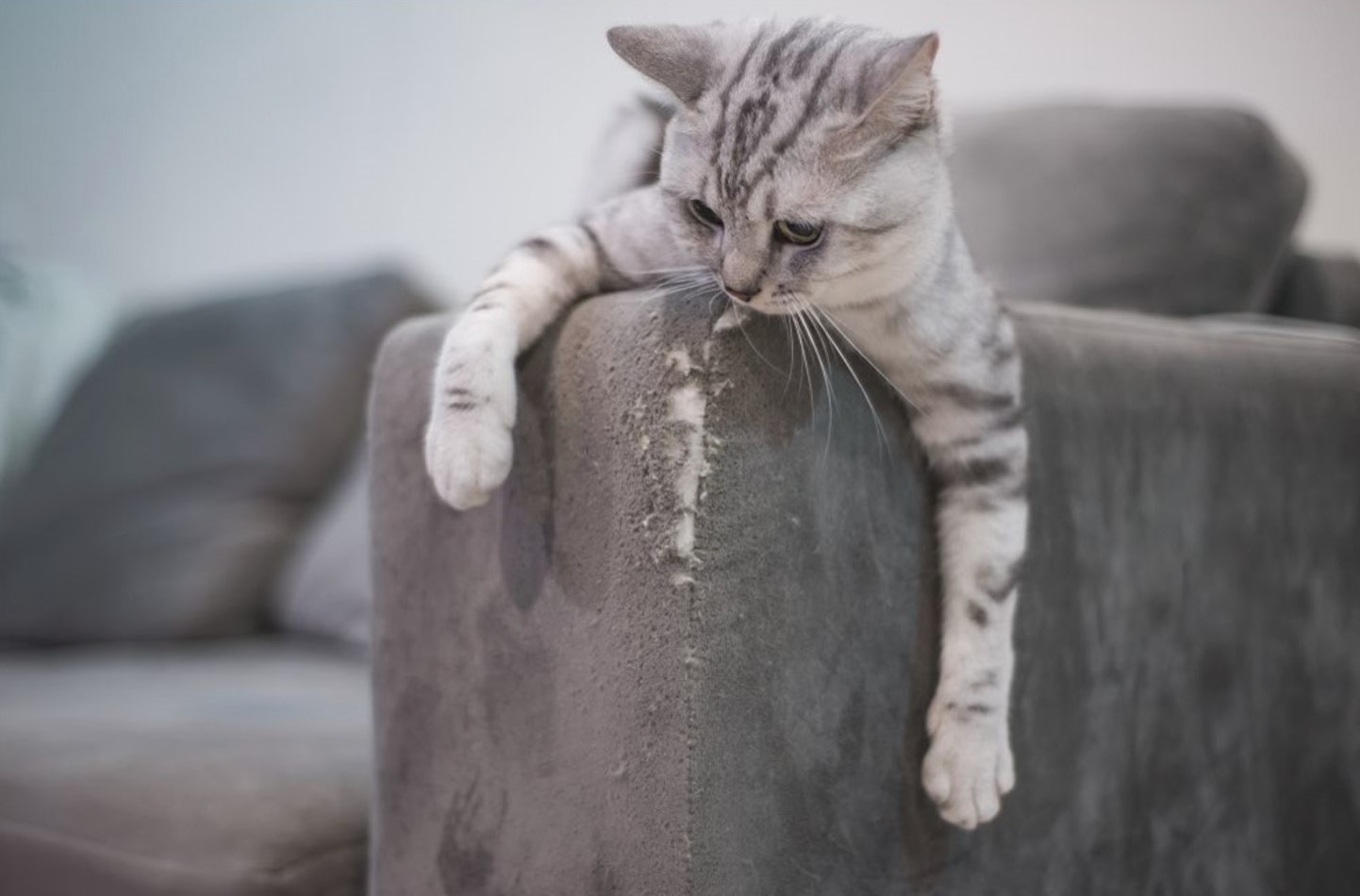Answering the question do cats scratch velvet? Well yes, cats do scratch velvet. Cats aren’t picky when it comes to scratching surfaces. From sisal scratching posts to cardboard scratchers and even wooden furniture, they explore a range of textures. Surprisingly, velvet is also on their radar.
As any cat owner knows, felines have an innate need to scratch surfaces, and sometimes, they show a particular affinity for materials like velvet. In this article, we’ll delve into the reasons behind this behavior, explore its pros and cons, and discover effective strategies to maintain harmony in homes with velvet-clad furniture.
1. The Allure of Velvet

Velvet’s soft, luxurious texture isn’t lost on our feline friends. The material provides a unique sensory experience, making it an attractive option for scratching.
Understanding the allure of velvet involves considering the tactile sensations cats seek and the benefits they gain from scratching softer materials.
2. Training Cats to Avoid Velvet Scratching

Training cats to avoid velvet involves positive reinforcement. Rewarding them for using designated scratching surfaces encourages the desired behavior. Cats need alternatives. Offering a variety of scratching posts and pads can redirect their attention from velvet.
3. Using Deterrents
Deterrents, such as pet-friendly sprays or double-sided tape, can discourage cats from targeting velvet-clad surfaces.
How to Keep Cats from Scratching Leather Furniture, 9 Tips
4. Investing in Designated Cat Furniture

Cat furniture with scratching surfaces provides a compromise, allowing cats to express their natural behavior without compromising your velvet-clad items. Modern cat furniture a diverse range of scratching materials ensures cats find alternatives that suit their preferences.
5. DIY Solutions for Protecting Velvet

Crafting DIY scratching surfaces allows owners to control the textures and materials, catering to their cat’s specific preferences.
Protective coverings like slipcovers or specially designed cat-proof materials can shield velvet from the occasional scratching spree.
6. The Importance of Regular Nail Trimming

Regular nail trimming for cats is a preventive measure, reducing the potential damage caused by scratching. Beyond furniture protection, nail trimming contributes to the overall well-being of cats by preventing discomfort and potential injuries.
7. Personal Anecdotes of Cat Owners
Real-life stories of cat owners facing and successfully addressing the challenge of velvet scratching. Learning from the experiences of others can provide valuable insights into effective strategies to deal with velvet scratching.
Considering the experiences of other cat owners through reviews and recommendations can guide your choices.
What to Do With Furniture When Getting New Flooring, 11 Tips
8. Common Misconceptions About Cat Scratching
Contrary to belief, cats aren’t intentionally destructive when they scratch. It’s a natural cats behavior driven by instincts. Understanding that scratching is a multifaceted behavior helps dispel the myth that it’s solely a behavioral problem.
Consulting with Veterinarians or Cat Behavior Specialist

When scratching becomes a persistent issue, seeking professional advice ensures that any underlying health or behavioral concerns are addressed. Understanding the root cause of excessive scratching allows for targeted solutions, improving the overall well-being of your feline companion.
Pros and Cons of Cats Scratching Velvet
Pros: Comfort, Attraction, Potential Stress Relief. While scratching velvet can be aesthetically challenging, it offers comfort to cats. It may also serve as a stress-relief mechanism.
Cons: Potential Damage, Shedding, Cleaning Challenges. On the flip side, velvet scratching poses challenges like potential damage to furniture, shedding of velvet fibers, and difficulties in cleaning.
Conclusion
The question “do cats scratch velvet?” is not merely about cat behavior but understanding their innate needs. By acknowledging their instincts, providing alternatives, and incorporating preventive measures, cat owners can create a home where velvet and cats coexist harmoniously.
Striking this balance ensures that both human and feline members of the household can enjoy a comfortable and aesthetically pleasing environment.
FAQs
Q: Can I train my cat to stop scratching velvet?
A: Yes, positive reinforcement and providing alternative scratching surfaces can help redirect their behavior.
Q: Will using deterrents harm my cat?
A: Pet-friendly deterrents are safe and designed to discourage scratching without causing harm.
Q: How often should I trim my cat’s nails?
A: Regular nail trimming is recommended every 2-4 weeks, depending on your cat’s activity level.
Q: Should I be concerned if my cat scratches excessively?
A: Excessive scratching may indicate underlying issues, and consulting with a veterinarian or cat behaviorist is advisable.
